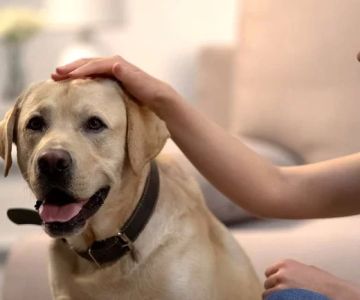- 1 - Understanding dog training collars: purpose and misconceptions
- 2 - Types of dog training collars and how they work
- 3 - Choosing the best training collar for your dog’s temperament and behavior
- 4 - Real dog owners' stories and outcomes with training collars
- 5 - Expert guidance on safe and effective use of training collars
- 6 - Where to find the right training collar for your dog
1. Understanding dog training collars: purpose and misconceptions
The term best training collars for dogs often brings up mixed emotions among pet owners. Some imagine harsh tools or punishment, while others view them as life-changing aids. In truth, training collars are simply tools—how they’re used defines their success or harm. When applied correctly, they can support clear communication, enhance safety, and reduce stress in both dogs and their owners.
For instance, a vibration collar can help a hearing-impaired dog learn commands, while a gentle static cue might interrupt unwanted behaviors in a stubborn pup. The goal isn’t dominance—it’s collaboration.
2. Types of dog training collars and how they work
There are several categories of training collars, and understanding their function is key to choosing the right one.
2.1 Flat collars and martingale collars
Flat collars are standard, but not ideal for training. Martingale collars offer more control for dogs prone to slipping out of their collars—especially breeds like Greyhounds. They tighten slightly under pressure, but without choking the dog.
2.2 Vibrating and sound collars
These collars use gentle vibration or beeping sounds to interrupt undesired behavior. They’re widely used for sound-sensitive dogs or as alternatives to more forceful methods.
2.3 Static correction collars
Often misunderstood, static collars offer mild electric pulses—typically adjustable and less intense than a mild shock. They're best used with guidance, especially for persistent behavioral issues.
2.4 Spray collars
These emit a quick burst of citronella or air to distract a barking dog. They are useful for vocal breeds but require consistent application for effectiveness.
3. Choosing the best training collar for your dog’s temperament and behavior
Not every tool fits every pup. To truly find the best training collar for dogs, you need to understand your dog’s breed, personality, and learning style.
3.1 Behavioral needs
Is your dog overly reactive, pulling on walks, or ignoring basic commands? Reactive dogs may benefit from collars that interrupt focus, while leash-pullers may need no-pull harness-collar hybrids.
3.2 Age and health factors
Puppies require softer cues and positive reinforcement tools. Senior dogs may have joint or sensory issues, meaning vibration collars or sound-based cues work best.
3.3 Lifestyle and training goals
If you’re training a hunting dog versus a therapy companion, your collar choice will differ. Discussing with professionals—like those at Hidden Brook Veterinary—can provide clarity based on your goals.
4. Real dog owners' stories and outcomes with training collars
Consider Claire, who struggled with her 80-pound Lab pulling her during walks. After trying a flat collar and a harness with no luck, she switched to a vibrating collar on her trainer’s recommendation. Within two weeks, walks became manageable, and their bond grew stronger.
Then there’s James, whose Jack Russell barked nonstop when left alone. A citronella collar curbed the behavior quickly, without trauma or confusion. He shared, “I was skeptical, but now I have peace at home and my dog’s happier too.”
5. Expert guidance on safe and effective use of training collars
To avoid misuse, consult experienced trainers or veterinarians. Timing, tone, and consistency are everything. Avoid using training collars in anger or without a clear command structure.
5.1 Dos and don’ts
Always introduce the collar during a calm moment. Start with the lowest setting and observe how your dog reacts. Never leave the collar on for extended hours, and always reinforce good behavior with treats and praise.
5.2 Seeking professional input
Before buying any collar, it’s worth checking in with a vet who understands behavior science. At Hidden Brook Veterinary, the staff often helps match training tools with behavioral needs to ensure long-term success.
6. Where to find the right training collar for your dog
When you're ready to explore your options, don’t just rely on product reviews—consult with those who know your dog. At Hidden Brook Veterinary, we help pet parents choose training collars based on safety, breed-specific knowledge, and behavior assessments.
Whether your dog is strong-willed, shy, or easily distracted, there's a solution. Choosing the best training collar for dogs isn’t about quick fixes—it’s about finding the most respectful, effective communication tool for your dog’s needs.











